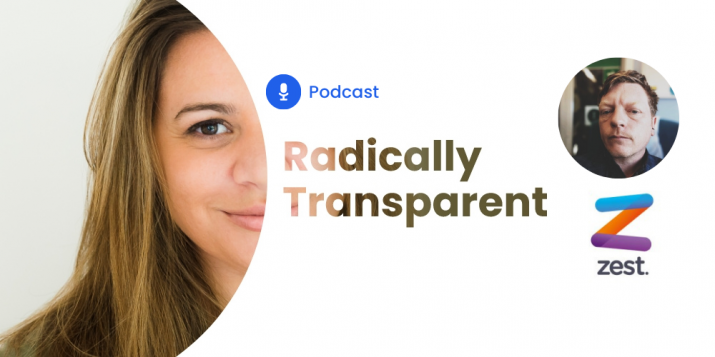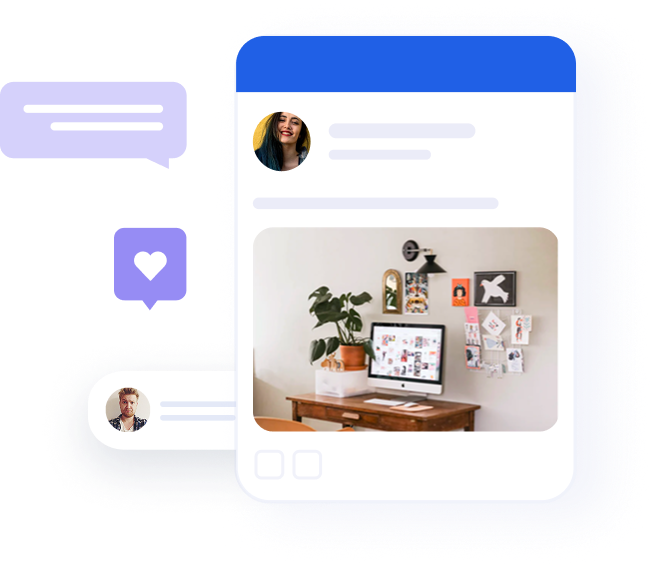
How to use social media to generate more leads for your business
Table of contents
B2B marketing teams share a common aspiration: generating as many Marketing Qualified Leads (MQLs) as possible. These potential leads exhibit a certain level of interest and engagement with the company’s offerings and are more likely to result in ‘closed won’. While moving MQLs down the funnel may seem simple, a study by the RevOps Co-Op indicates that nearly 80% of B2B tech businesses have been unable to reach their goals over the last few quarters. That’s why, now more than ever, optimizing lead generation strategies to identify and nurture these MQLs becomes paramount to any organization’s revenue generation efforts.
This is where strategic social media utilization comes into play. While some businesses still use social media exclusively for brand awareness or community management categories, research claims that 75% of B2B buyers use social media to make buying decisions. If you’re not using it as a resource to nurture, engage, and foster relationships with potential buyers, you’re missing out on a golden opportunity to drive more revenue.
Thankfully, even if you’re not currently using social media for lead generation, it’s never too late to get started. We’re here to share tips and best practices we’ve discovered.
Jump to section
- Get to Know Your Audience
- Proven Strategies to Drive More MQLs from Social Media Content
- Putting It All Together
Get to know your audience
The first step in using social media for lead generation is understanding your leads. This may sound self-explanatory, but hear us out. While most marketers acknowledge that understanding their audience is key to any successful marketing campaign, a recent study shows that only 42% know basic demographic information about them.
If this is the case, where are we getting insights and ideas about our audience’s pain points, challenges, and needs? Oftentimes, it’s from our internal resources. In other words, we may just be drinking our own Kool-Aid.
So, how can we get to know our audience without bothering them with surveys, phone calls, or emails?
The easiest way is through social media. Here are some great tactics you can use:
Social Listening
Social listening refers to monitoring conversations about your brand, products, competitors, and keywords, analyzing what is being said by whom, and then acting on that information.
In essence, social listening is all about extracting answers to key questions about your industry and using this to define how you will create content for lead generation.
You should ask yourself: What are your customers interested in? What are your competitors’ customers lacking? What’s engaging key audiences right now, and how can you leverage that to generate stronger interest in your social posts?
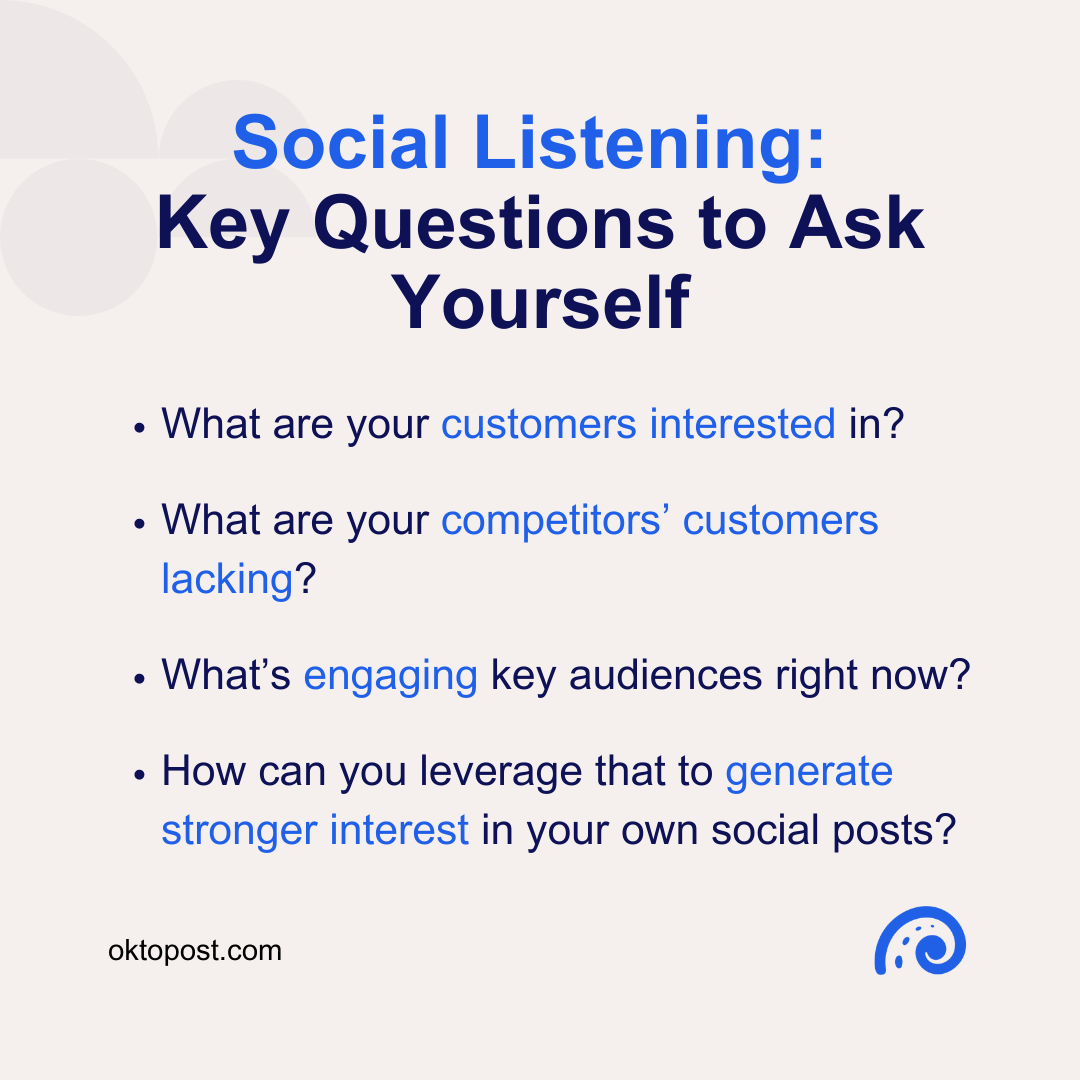
Social listening lets you better understand your audience and what makes them tick. You can then use this information to drive online conversations, connect with your audience, and write content that solves their problems.
Sentiment analysis
Your company’s mission is to provide something valuable to your audience. Sentiment analysis is the best way to understand whether you’re achieving that goal or completely missing the mark.
Sentiment analysis refers to analyzing brand mentions and other relevant data to understand your audience’s thoughts about your company and its products or services. With the right social media tools, you can generate key insights into your brand’s reputation, strengths, and weaknesses. Having such a clear snapshot of your reputation among followers and leads lets you learn valuable insights about what you’re doing right and what you still need to improve upon.
Community management
Think about it–who do you know best and trust the most? For most people, it’s their family, friends, and people in their extended community. For this reason, the importance of strong community management on social media cannot be overemphasized. By building an online community, you are creating a space where potential leads can connect with like-minded individuals, gain resources and ideas, and learn new techniques for solving their problems. This builds trust, loyalty, and brand recognition while enabling you to get to know your audience even deeper.
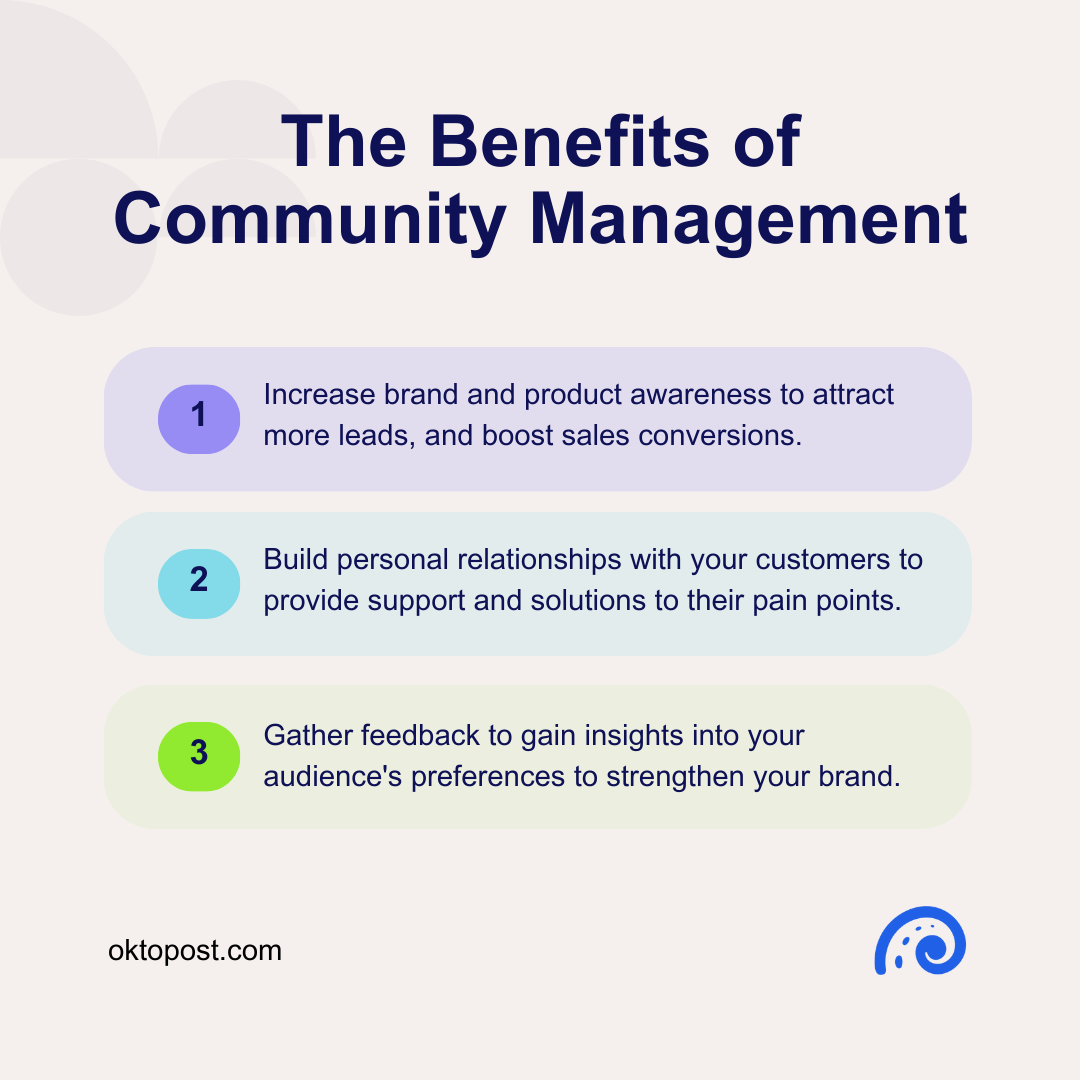
Another aspect of strong community management is, of course, customer support. It may seem like a disaster when a customer posts a problem they had with your company on social. But in reality, it’s an opportunity to show your audience that you understand their challenges and care about their needs. By playing an active role in your community and addressing problems quickly, you provide social proof that you listen to your customers, solve their issues, and engage with them online. This can make or break a deal for your business. A brand that responds to customer complaints on social media can increase customer advocacy by as much as 25%.
Social community management might sound like a lot of work to implement, but trust us when we say the end result is worth it. If you need more convincing, look no further than these B2B brands:
- Hubspot has created an online community that provides value to its audience by sharing helpful tools for marketing and sales professionals. This keeps their audiences coming back for more content.
- Adobe leverages user-generated content to share authentic case studies that showcase its product’s value and build brand loyalty. It also amplifies its employees’ voices with the hashtag #adobelife. This tactic proves successful with buyers, who factor employee treatment into their buying decisions.
- Monday.com’s social media pages, online forum, and Facebook community groups regularly inform their audience with product updates, which their community can actively influence and vote for. This demonstrates their commitment to solving their customers’ needs.
While it may seem like you need to be in multiple places at once to help your social community thrive, a centralized platform can help you manage your community across multiple channels so you can stay engaged with it using one dedicated UI.
Social Analytics
Once you’ve posted on social media, how do you know if the message resonated with your audience?
Clicks, likes, and impressions are key indicators. However, having analytics that dive deeper into conversions will show you which content hits home. You’ll see which campaigns are most successful, which topics drive the most interest, which platforms work best for your brand, and more.
With the right analytics, you can gain an accurate, tailored, and informative overview of your social media performance, audience, and which social campaigns contribute to ROI. You can use these actionable insights to constantly inform, adjust, and rework your social media marketing strategy to cater to your audiences and stay ahead of your competitors on ever-changing trends.
Recommended for further reading
Proven strategies to drive more MQLs from social media content
Now that you know your audience and can create content that appeals to their needs and interests, you need to start building a social media strategy that will turn audiences into leads and leads into loyal customers. It’s not just about creating quality content and hoping the right people see it. You need to implement the proper positioning and techniques to give your content that extra boost. These are our top strategies for creating social content that converts:
Employee advocacy
The most valuable resource your business has is its people. B2B customers are far more likely to be influenced to purchase your products by your employees, not your corporate social media accounts. The proof is in the stats: 76% of individuals stated that they’re more likely to trust content shared by individuals rather than content shared by brands. So, how do you bridge this gap and utilize your staff to start converting more leads?
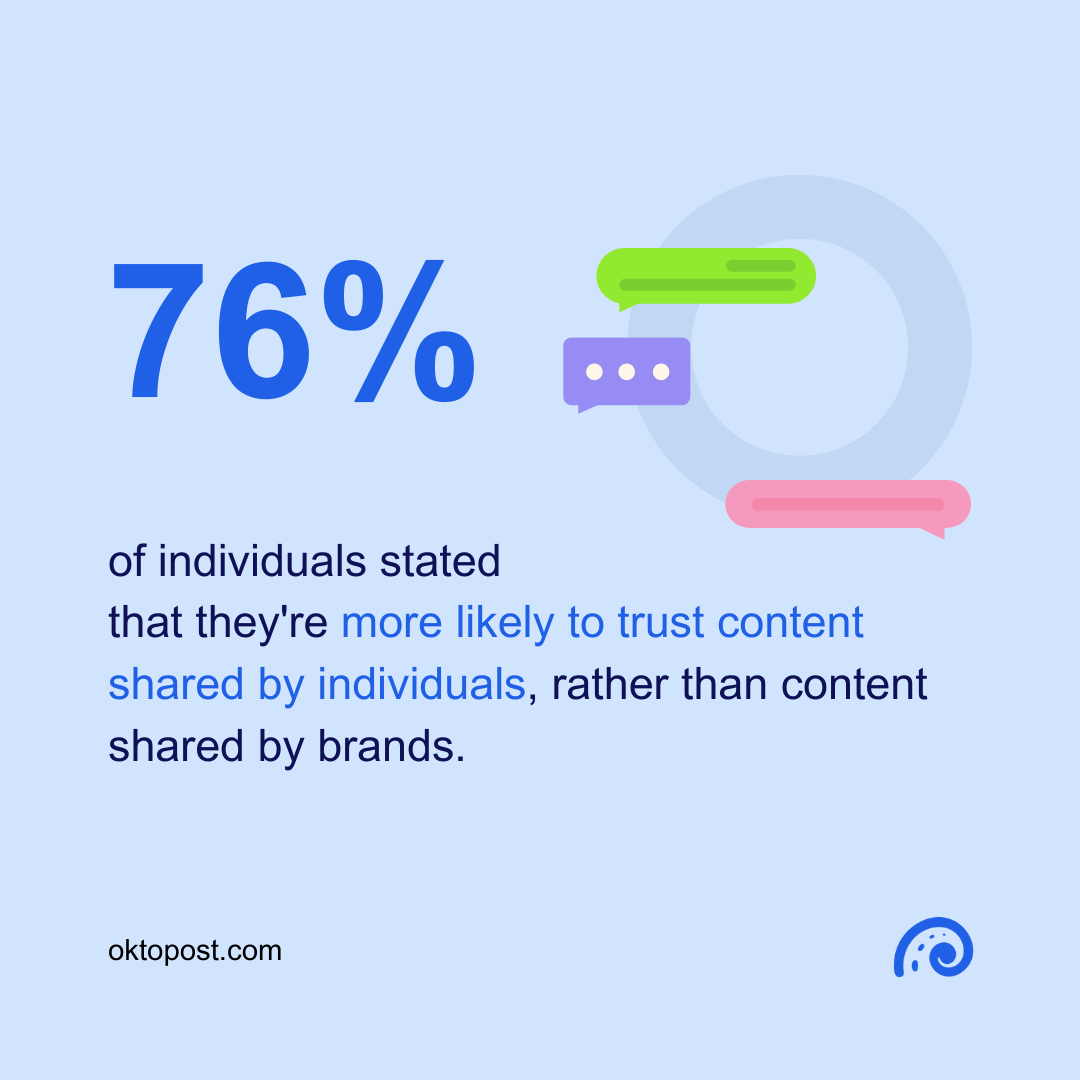
Source: Peer to Peer Marketing
You should start now if you’re not already running an employee advocacy program. Our research shows that nearly half of CMOs agreed that employee advocacy was their best-performing social initiative, and plenty more statistics demonstrate its value.
By diversifying your social media presence beyond your corporate channels, you can identify new leads and expand to new audiences in your employees ‘ networks.
This is an excellent method for making your social media strategy feel more organic. It caters to a widespread desire among modern B2B audiences to work with humanized brands. Employee advocacy provides a strong marketing campaign underpinned by social proof rather than plain old self-promotion.
B2B influencer marketing
If you want to gain access to the most valuable audiences, then B2B influencer marketing should become a core part of your social media strategy. Statistics show that B2B influencer marketing campaigns have higher conversion rates than other marketing tactics, with an average conversion rate of 13%. They also produce three times the number of leads that traditional marketing methods do.
For several reasons, B2B influencer marketing campaigns tend to have higher engagement rates. As we’ve said before, people like to buy from people, and influencers are no exception.
Influencers are seen as thought leaders and experts who create engaging content that provides value to their followers. Their audiences seek their expertise and want to interact with their content. This will result in great exposure for your brand.
Most companies mistakenly think influencer marketing is out of budget simply because they can’t afford the top influencers. But don’t let the term micro-influencer throw you off. Despite having smaller followings than those with massive audiences, these influencers offer substantial value to businesses collaborating. Their micro-status is typically built on niche relevance, resulting in highly focused audiences. Identifying a pertinent micro-influencer means connecting with an audience better aligned with your brand than larger voices. Even more beneficially, this approach leads to more qualified leads flowing through your sales funnel.
User-generated content and social proof
Giving your products and services a human voice is a tremendously powerful tactic on social media. That’s why user-generated content (UGC), such as your users’ testimonials and social media posts, is crucial. It raises awareness that feels much more organic than corporate marketing.
Buyers want to hear other customers ‘ experiences with your brand. Similar to the appeal of employee advocacy, they are drawn to buy from people’s referrals over your business’s claims. Research shows that people are 90% more likely to buy from a brand recommended by a peer, and in the B2B space, 84% of B2B decision-makers state that their buying process started with a referral.
Increasingly, brands are utilizing UGC by interacting with it or reposting it on their social media. This exposes it to a broader audience without diluting the original power established when a customer decides to post about your brand.
Putting it all together
The relationship between social media and lead generation holds powerful, long-term value for your marketing strategy. Once you understand your audience and learn how to target them with the methods provided above, you’ll be able to generate more leads, nurture them to become MQLs, and eventually help your business reach its revenue goals faster.
However, without the right tools for social listening, content publishing, and community management, businesses will struggle to harness their social channels’ power. This is where Oktopost comes in—by supporting businesses with a seamless, integrated platform to help them manage their social media strategies all in one place, it’s easier to realize social media’s potential for lead generation without any added stress.


